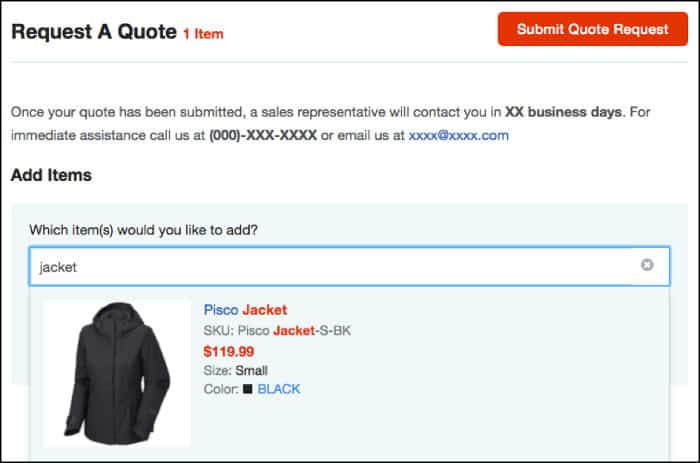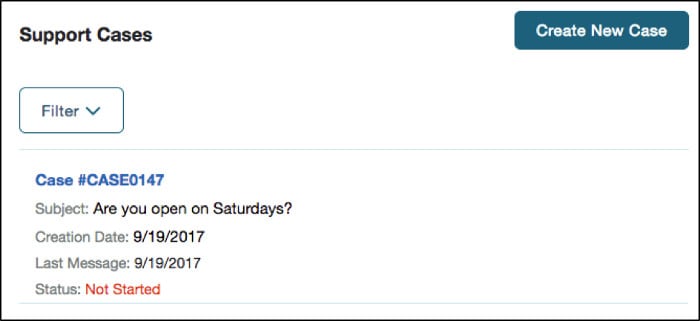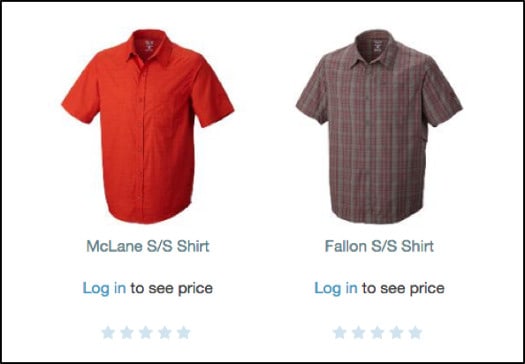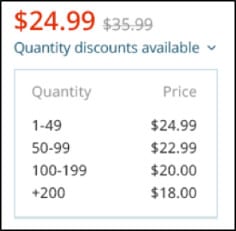As more and more business-to-business companies move into the online world and embrace e-commerce, many are rushing to replicate the business-to-consumer experience that shoppers have come to expect. And quite rightly so. But having a B2B web store requires more than just replicating a B2C experience. It means providing online capabilities that solve the unique challenges faced in the world of B2B.
Here are several features that can transform your B2B web store and enhance your customers’ buying experience.
Self-Service Quotes
One of the biggest benefits of e-commerce is convenience. Shoppers can browse and place orders at any time of the day, without needing to involve staff members. Modern B2B organizations need to harness this in a way that is appropriate to them, which means not only offering the same no-rep ordering process, but also a no-rep quoting service.

Related to providing the ability to self-quote, here are some additional features to consider:
- Can the buyer build up their list of items via standard product detail pages and “quick add” forms specifying UPCs or barcodes?
- Can they track the status of their quotes?
- Can the quote be converted to an online order once it has been approved?
Communicating with sales reps can be reassuring and useful to both buyer and seller, but for many transactions it can be slow and inefficient. Self-service can solve that issue.
Account Self-Management
In the vein of self-service functionality, consider what else can be automated to help your buyers.

Powerful account management features have long been made available to B2C shoppers and include things like an address book and order history, but there are features that are important to online B2B customers, including:
- Viewing outstanding and available balances, deposits and credit memos.
- Viewing invoices and paying them.
- Viewing and creating support cases (as shown in the image above).
Streamlining the account management features enables customers to be more efficient and allows them to get on with their business.
Access-Restricted Site
Most online B2B sellers want parts of their site high in search engine rankings, but some want to keep their catalogs gated to only approved buyers.
Restricting access to your catalog can have numerous benefits. First, you may want to use it to personally engage with each of your potential customers before doing business with them.
Restricting access can also present a business advantage over your competitors. If you find out the extent of a competitor’s inventory you can discover their limitations and what their focus is, enabling you to develop new or expand existing lines to exploit their weaknesses. By limiting your catalog’s exposure, you can minimize your competitors’ ability to discover your own inventory weaknesses.
Website access restriction usually takes the form of requiring a user to register before they can view your product list and product detail pages. Additional controls could be implemented too, for example in the form of approval workflow: registering for an account does not automatically grant access, and instead requires a rep to first make contact before approving access.
Access-Restricted Pricing and User-Specific Pricing
Like site-restriction, you can choose not to expose the prices of your items on your web store unless a buyer is logged in and approved.

In some ways, this is a mid-point between full restriction and full access. You could recognize, for example, that anonymous users can be a useful driver of business, but you don’t want your prices visible to competitors or indexed by search engines.
A second consideration is user-specific pricing. Depending on the buyer, you may offer different levels of discounts. Rather than offering the discounts as line items at checkout (e.g., as promotions), you could instead offer those items at a lower price only for customers in a specific group, which are reflected on product detail and list pages
Quantity Pricing
Advertising and offering per-unit price reductions for higher volume orders can be a powerful purchasing incentive.

Historically, these negotiations typically take place between buyer and rep, and it’s a rare sight on B2C web stores. However, many platforms now offer this functionality out of the box and it can increase overall order value as well as conversion rates.
By being clear about quantity discounts — and automatically applying them to online orders and quotes — you streamline the process meaning that your sales reps don’t need to intervene, potentially slowing the process.
Multiple Shipping Addresses
This functionality is often called multiple ship-to and allows an order to be split so that constituent items can be ordered at once but shipped to multiple locations.
Just like your business, your buyers’ organizations may operate from multiple locations; their office may not co-locate with their warehouse, for example.
Using multiple ship-to is another way to remove friction from placing an order: If an entire order can only be sent to one place, then the buyer either has to manually split the order up into two, three or more separate orders, or accept delivery at one place and then distribute it themselves. One is a time-wasting inconvenience, the other is a logistical pain — but with multiple ship-to, your buyers never have to suffer.
Store and Outlet Locator
It is not uncommon for B2B sellers to operate small, retail-like operations from their warehouses. For minimal investment, you can run a trade counter where local tradespeople and customers can engage with you, make purchases and otherwise develop a relationship with you and your business.
Slick store locators often integrate with geolocation and map services, such as Google Maps. Given existing familiarity of these services, it is easy for potential visitors to quickly find your locations near them, plan a route and even get driving directions. Furthermore, you can combine functionality with the ability to order online and pick up orders in person to really amplify its effects.
To succeed in today’s market requires growing the online channel to meet B2B buyers’ complex requirements and rising expectations. There are a number of features that translate well from B2C to B2B and while you should embrace them, you should always be on the lookout for the specific problems your B2B buyers face. If you can solve those problems, you will truly differentiate yourself in the marketplace.
Steve Goldberg is the developer community manager for Oracle NetSuite, where he fosters a community of third-party developers for the NetSuite SuiteCommerce platform. Follow them on Twitter @NS_Ecommerce.